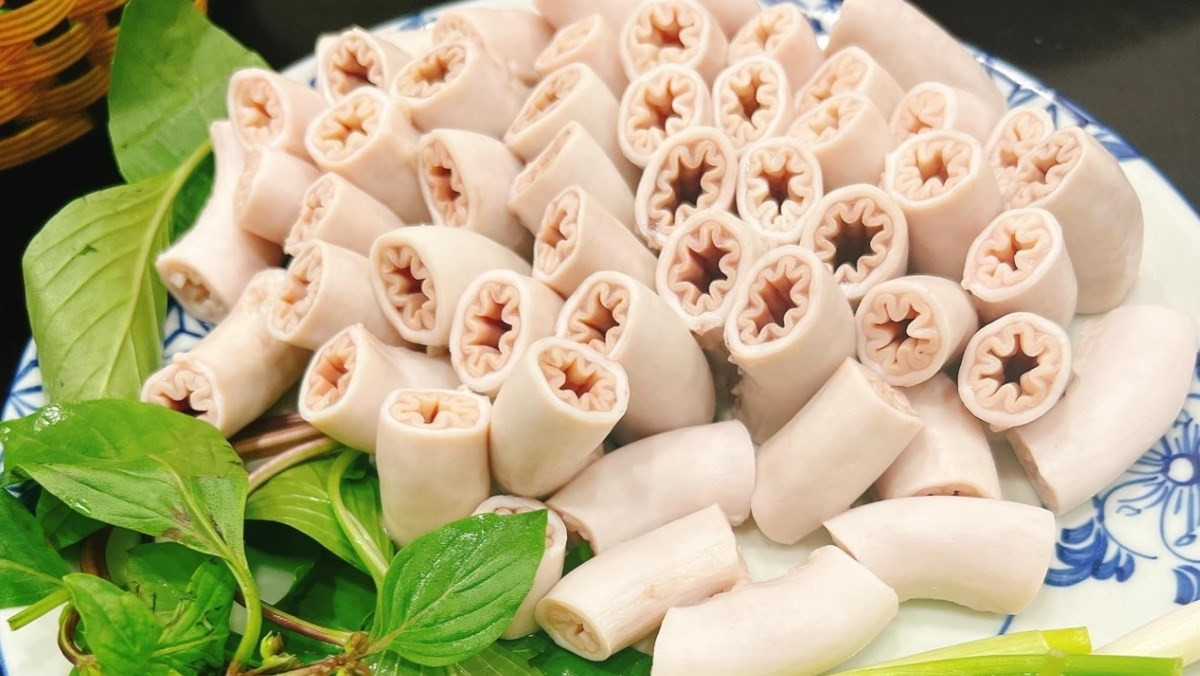
Ho Chi Minh City’s Food Safety Authority has launched an official investigation into lòng se điếu - a rare and highly coveted pork intestine delicacy - after viral social media posts alleged the use of industrial chemicals to counterfeit the dish and deceive consumers.
The controversy erupted in late April when Facebook user P.B.H., who claimed decades of family experience in pig slaughtering, posted an exposé about widespread sales of fake lòng se điếu.
Also known in southern Vietnam as phèo hai da, the authentic version is reportedly found only in a small section of the small intestine of aging, underweight female pigs. “Out of tens of thousands of pigs, maybe one has it,” the user wrote.
The viral post ignited a public uproar, especially after a photo surfaced showing a 40-meter-long string labeled as lòng se điếu. The image drew tens of thousands of interactions and raised alarm among netizens. “If it’s that rare, how can it be sold so easily and in such quantity?” one user questioned.
In response to mounting concerns, Pham Khanh Phong Lan, Director of Ho Chi Minh City’s Food Safety Authority, confirmed on May 6 that her department had begun testing samples and tracing the origins of products being sold.
“This is the first time we’re officially examining lòng se điếu,” she said, noting that regulatory efforts had previously focused on more conventional meat and seafood products.
Chefs, butchers, and food safety experts have since spoken out. A Ho Chi Minh City-based chef, identified only as V.Q., explained how fake versions of the delicacy are created.
“Vendors soak intestines in chemicals like alum, hydrogen peroxide, or diluted formaldehyde to shrink the tissue, then twist or roll them by hand,” he said. “Sometimes, glue-like substances are injected to simulate the signature double-layer texture.”
Assoc. Prof. Dr. Nguyen Duy Thinh, former lecturer at the Institute of Food Technology, Hanoi University of Science and Technology, confirmed that real lòng se điếu exists but is extremely rare and typically no longer than one meter. “Photos of 30 to 40-meter lengths are highly suspicious,” he said.
Dr. Thinh also warned of the severe health risks posed by using industrial chemicals in food. “Formaldehyde and hydrogen peroxide are extremely toxic. Prolonged exposure can lead to liver and kidney damage, digestive issues, and even cancer,” he stated. “Their use in food for cosmetic or economic purposes is illegal and a major public health threat.”
He further warned that these substances are nearly impossible for consumers to detect without laboratory testing, as they are colorless, tasteless, and odorless.
Despite the investigation, lòng se điếu continues to be sold at prices ranging from 1.5 to 4 million VND per kilogram (approximately $60 to $160), making it one of Vietnam’s most expensive pork-based items. Its sudden market abundance and steep price hikes have further fueled suspicions.
Consumers nationwide are now calling for stricter oversight of the meat processing sector, demanding clearer labeling, transparency, and tougher penalties for violations.
As health officials continue testing and source tracing, the lòng se điếu case has sparked a broader public discourse in Vietnam about food fraud, consumer safety, and the hidden dangers of chemically modified foods sold as luxury delicacies.
Duong Lam - Phuong Thuy